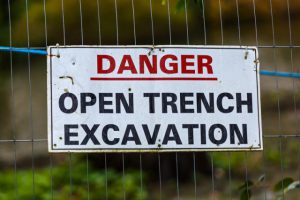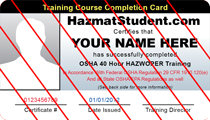| Beneath the Surface | Alarming Rise in Trench Accidents |
23 construction workers died in trench collapses in 2016, which exceeded the total number of trench-related construction deaths from 2014 and 2015 combined. In response, the Kentucky Fatality Assessment and Control Evaluation (FACE) Program has issued a hazard alert including the following recommendations to help keep trench workers safe:
- Inspect trenches before each work shift, as well as after rain and other incidents that may increase the hazard level. The inspection should be performed by a competent person.

- Trenches between 5 and 20 feet deep must use protective measures such as benching, shoring, sloping, and shielding. For trenches over 20 feet deep, a professional registered engineer needs to design the protective system.
- Excavated soil and other materials need to be kept at least 2 feet from trench edges.
- Workers need to be trained on recognizing tension cracks, bulging, toppling and other signs of imminent trench collapse.
- Ensure there is a safe method to exit the trench within 25 feet of the workers.
Many workers mistakenly believe they would be able to escape a trench collapse if it happened to them. Consider that just one cubic yard of soil can weigh as much as a car, per the mentioned hazard alert. The intense weight of soil can quickly overcome a worker’s ability to move, which may lead to tragedy. Through the right training and proper trench work procedures, these accidents can be prevented and avoided.
For additional information on trench safety, see OSHA’s Trenching and Excavation webpage and the OSHA Fact Sheet on the topic.



